A Shanghai Story
Meet Gerry O'Sullivan, Irish-Australian author of 'Gangsters of Shanghai', a ripping police yarn that delves into the sordid glamor of Shanghai in the early 20th century
As a child growing up in Ireland, Gerry O'Sullivan spent many summers at his grandmother’s farm. On one visit he came across an old black and white photo that showed a young Western man, seated, unsmiling and formally dressed, while stood around him were four young Chinese men wearing traditional silk robes. His great-uncles, he discovered, had served in the 1920s Shanghai police force. When, years later, he decided it was time to write a book, he knew just the subject matter.
Hi Gerry, good to meet you. Could you please share a bit about your background, who you are, where you've lived?
I was born in Limerick City, Ireland and grew up there and I landed in Australia at about 11.30pm on New Year’s Eve, 1986. I came to Australia to be best man at an old schoolfriend’s wedding in Melbourne, and the plan was to be here for one year on a working holiday visa.
I spent my first few months in Melbourne, then moved up to Sydney with the intention of travelling around Australia, but fell in love with the city and have considered it to be home ever since. I was incredibly lucky to find a job where my employer sponsored me for a permanent resident visa. Later, I took up Australian citizenship and so hold dual Irish and Aussie nationality.
Outside of writing, I work in corporate training, or learning and development, to use the current corporate-speak. Before I left Ireland, I had completed a Bachelor of Business degree with a major in Human Resource Management at the University of Limerick, followed by a postgraduate in education. My first job in Limerick, in 1985, was at a very traditional secretarial college where I helped the college transition from manual typewriters to computers and word processing.
When I arrived in Sydney, I did the usual casual backpacker jobs but ran out of money (too much spending on beer!) so decided to find something that paid a professional salary. I began teaching in a college offering courses to adult-aged international students. At that time, international education in Australia was on the cusp of a huge wave. After a few years working in the sector, two colleagues and I opened our own college in Sydney. We ran that business for the next 14 years, from 1991 to 2005.
During that time, I was working with students from all over Asia, and especially in the early days, many from Shanghai. I had a childhood fascination with that Chinese city and meeting these students brought it all back. My work gave me the opportunity to travel all over Asia and the region resonated with me in a way that few other places have. I feel totally at home whenever I step off a plane in Asia.
After we sold the business in 2005, I spent some time travelling, studying, reading and researching, and eventually got back into the workforce. All my jobs since have focused on employee training, adult education and training for technology rollouts.
I understand you have a family history in China with two great-uncles who served in the Shanghai Municipal Police?
When I was a young kid growing up, my family lived in Limerick City and so my day-to-day life was quite urban. My mother had grown up on a dairy farm in County Limerick and the family spent our summer holidays there on the farm.
There was an old black and white photograph on the wall in my grandmother’s farmhouse which showed a young man, seated, unsmiling and formally dressed, and standing around him are four young Chinese men wearing traditional Chinese silk robes.
I found this photograph absolutely fascinating and when I asked about it, I was told that this was my grand-uncle, my grandmother’s brother, who had been a Detective Inspector in the Shanghai Municipal Police (SMP). When I asked further questions, I was told that the man in the picture was one of two brothers who served in the SMP.
The picture fascinated me, and it gave me a lifelong curiosity about my granduncles, the lives they would have led, and the adventures they would have had in Shanghai.
My curiosity was further fuelled by the fact that whenever I would ask questions of my relatives, the response essentially was, “Oh, we don't know much about their lives in Shanghai really - they didn't talk about it much.”
So, I think somewhere in the back of my mind was a determination to find out as much as I could about them, or a very least find out as much as I could about the Shanghai Municipal Police.
Have you ever lived in China? When did you visit Shanghai ?
I haven't actually lived in China, but I have travelled to China and Hong Kong about ten times. This was a mix of business trips, holidays, research trips and marketing trips for the college. The last time I was in China was about five years ago.
I have also spent thousands of hours with students from China and all around Asia while working in the international education sector.
My wife Yumi is from Kobe, Japan (and, to answer the obvious question - no she wasn't my student!). We have a teenage daughter who has been learning Japanese since she was about 5 and so we travel quite regularly to Japan for family holidays. We go to Tokyo, Osaka, Kobe and have had several winter skiing holidays at Hakua Valley, near Nagano.
During our travels Yumi and I fell in love with Singapore and so when we decided that I would finally start writing the novel we actually moved to Singapore in 2009, a few years before our daughter was born.
This was an opportunity to be away from normal, everyday life and just get on with writing. And so we spent most of 2009 in Singapore. We rented an apartment, travelled by public transport and went all over the Island, to obscure corners that tourists almost never go to.
Funnily enough, I used Singapore as an inspiration for Shanghai in the 1920s, although in some ways the two cities might appear to have nothing in common. For example, Singapore is exceptionally clean, well organised and low on corruption, while old Shanghai was exactly the opposite. But in many ways, they also had a lot in common.
Singapore now is an international crossroads, a cultural melting pot, English language speaking, colonial influenced, with vibrant trade, an international population, and the same busy hustle and bustle as in Shanghai in the 1920s.
How did you find the Shanghai you visited compared to the Shanghai of the 1920s?
In some ways it's a completely different city now and it has become very futuristic and high tech. I often think when I look from the Bund across the river to the Pudong skyline one could use it as the setting for a science fiction movie.
On the other hand, there is quite a bit of the old architecture that has survived very well, and areas like the French Concession have been preserved very nicely. It's obvious also that's there is an increasing interest in the history of Shanghai. I think perhaps in the early days after 1949 Chinese people simply wanted to forget all that had gone before. But now I think there's a curiosity for that time.
In fact, last year I gave an online talk about the book to a group in Shanghai called Shanghai Art Deco, a group that celebrates and raises awareness of Shanghai’s built heritage and cultural history. They were very committed to preserving old Shanghai.
For readers who may not be familiar with the police force, could you share more information about the Shanghai Municipal Police? What was it, and why did it exist?
After the Opium Wars of the 19th century, China was forced to give trading ports - called concessions - to various European powers. In Shanghai there was an American Concession, a British Concession and a French Concession.
The British and Americans combined their concessions into what became known as the Shanghai International Settlement, while the French continued to hold their own area. There was a need for policing and in the International Settlement in the late 19th century the governing body set up a police force called the Shanghai Municipal Police, or SMP.
The SMP did all the normal things like traffic control and dog licences that any police force does, but they also had to contend with a very violent, wild city. They were up against triad gangs, opium dens, kidnappings, political riots, espionage, and unruly red-light districts, thronged with drunken, sex-starved sailors from all over the world.
At the time, Shanghai was considered to be the most dangerous police beat in the world and the Shanghai Municipal Police used more ammunition in a month than the Chicago Police Department used in a year - and this at a time when the Chicago police were up against gangsters such as Al Capone.
Because of this the SMP set up a special unit which essentially was the first ever SWAT (Special Weapons and Tactics) team. This police unit carried non-standard weapons, wore bulletproof jackets and helmets, and drove fast motorbikes and scarlet red armoured cars which were called Red Marias.
Many of the techniques used by SWAT police teams around the world today were actually developed in the 1920s and ‘30s by the Shanghai Municipal Police.
So tell us about Gangsters of Shanghai, why did you decide to write this book, about this time period?
My fascination with the time period came from my granduncles and what I knew about them, or rather what I didn't know about them. As I researched, I realised that Shanghai in the 1920s was an extraordinary city.
British officers led the Shanghai Municipal Police. But of course, many of them were also Irish, Welsh, and Scottish. Many SMP constables were Chinese and quite a few Indian Sikh men also served. Some white Russians also joined the SMP.
Frenchtown, as the French Concession was known, had its own French police force, where many of the officers were French, but they also had Chinese constables, as well as men from the French colonies of Indochina.
Even though there are some excellent novels and movies set in Shanghai in that time period, nobody has really done the story of the Shanghai Municipal Police. There are a few factual books about the SMP, but they were written for historical reasons rather than as a piece of entertainment. I felt that there was an opportunity to tell the SMP story in a form that people would find entertaining, which led to Gangsters of Shanghai.
What foreigners were drawn to live in the Shanghai International Settlement?
After the Russian Revolution of 1917 thousands of ‘White Russians’ fled and a substantial number of them came to Shanghai. The White Russians lived all over the city. You can still see the Russian impact today in Shanghai food. Originally Russian, the local variant of borscht is now considered a standard part of Shanghai cuisine.
In the 1920s and ‘30s Japan had a very right-wing government. And so many left wing Japanese, and less rigid people such as jazz musicians, writers and gay people, moved from Japan to Shanghai.
In the 1930s after Hitler came to power and made life exceedingly dangerous for Jewish people, thousands of German and Austrian Jewish people also arrived. The Shanghai International Settlement was the only place in the world where you could turn up without a visa and simply walk in, no questions asked.
This created various Shanghai enclaves. There was a part of the city known as Little Tokyo, there was another area that people called Little Vienna, which had many Viennese style cafes and bakeries. The French Concession of course was very French.
Shanghai had a Chinese city – Nantao – with traditional Chinese architecture and a fully Chinese population. Shanghai also attracted internal migrants from every part of China. There had been movement into Shanghai from the Chinese hinterland since the mid 19th century and the Taiping Rebellion.
What is the plot of the novel, and how much did you base upon your relatives?
In summary, Michael Gallagher is the son of a rural Irish cop, who had grown up during Ireland’s War of Independence. He had fallen in love with Fiona Burleigh, the daughter of Lord Burleigh, of the local Anglo-Irish aristocracy.
Fleeing the aftermath of Ireland’s troubles and the death of Fiona, Michael joins the Shanghai Municipal Police, only to find himself entangled with the city's underworld.
Michael must navigate a world of spies, jazz clubs, and vice, and the temptations of easy corruption while the city parties frantically on the edge of war. As the line between survival and corruption blurs, Michael faces a harrowing choice: escape the imploding city with his integrity - or lose himself entirely.
My research didn’t reveal much about my granduncles, and so my main character and the plot is entirely made up. Although the background events of the novel are entirely historically accurate and based on 10 years of research.
When I began writing, the story was going to be purely set in Shanghai. The flashback scenes to Ireland during the war of independence rather took me by surprise. They just bubbled up from my subconscious and I decided to ‘go with the flow’ and use them.
These Irish scenes came to me because my parents, and my uncles and aunts were born in the 1920s. I can remember during family gatherings my father and aunt used to talk about the Irish War of Independence and the Civil War in a very vivid way, as if they had happened only a short time before. So, I have always had a sense of that time period being very alive and recent.
Historical novels such as these are often scoured for factual accuracy - how did you go about researching the time period? And what hurdles did you have to overcome?
Probably the main hurdle to overcome was my own laziness. I am still amazed by writers who have written dozens of books.
The research wasn’t as difficult as I might have expected, in terms of sourcing information. The most significant piece of research I discovered was that the Shanghai Municipal Police records were smuggled out of Shanghai by the CIA just before the Chinese Communist victory in 1949.
These files are now all on microfilm at Brandeis University in the US. In 2002, I travelled to Boston and spent time on campus going through the SMP files. That was absolutely fascinating because it enabled me to read contemporaneous reports written by SMP officers. I was able to read handwritten documents that likely hadn’t been read by anyone since they were first penned.
There are many excellent books on Shanghai. In fact, at the end of my novel I provide a reading list of the various books that I consulted. That's not something you see very often in novels, but I felt that the books I consulted had such an impact on my work that I really wanted to acknowledge them and allow people to do further reading.
Was the line ever blurred then between fact and fiction?
In terms of factual accuracy, there are scenarios in my novel that sounds quite outlandish but are completely accurate.
For example, in 1937 Japan invaded the Chinese sections of the city but not the International Settlement. This led to a situation where European residents would go out in the evening dressed up in their evening wear and go to rooftop bars and nightclubs and while sitting and drinking their cocktails would observe the artillery shells fly overhead, fired by the Japanese and landing in the Chinese areas. People could stand on a street corner and from the safety of the International Settlement watch a battle between Chinese and Japanese forces take place across the street.
After the Japanese successfully conquered the Chinese parts of Shanghai in 1937, from then until Pearl Harbor in December 1941, it would have been an everyday sight to see checkpoints with British or American soldiers on one side, and Japanese soldiers on the other, standing only a few feet away from each other.
What were the most interesting things you learned during the writing and research process?
One of the most fascinating things I discovered were that the founder of the SMP special force, Superintendent (later Assistant Commissioner) William E. Fairbairn and his second in command Eric A. Sykes, later played a pivotal role in training British, American and Canadian commandos during World War II.
Fairbairn, a former British Marine, who was a multiple blackbelt and boxing champion, also developed a new self defence system for the SMP called ‘defendu.’ Defendu training manuals written by Fairbairn are now collectors items.
Drawing on their experience in Shanghai, Fairbairn and Sykes became instructors in unarmed combat, knife fighting, and firearms for elite units like the British Commandos, US Rangers and the Special Operations Executive (SOE).
They created the famous Fairbairn-Sykes commando knife, designed for stealth and quick, lethal strikes in close-quarters battle. This double-edged dagger, with its slender, sharp stiletto-type blade, became an iconic weapon for British commandos and continues to be associated with special forces worldwide.
How did the legal system work with different interests?
The legal system in the International Settlement followed British common law, for British and Westerners, but Chinese residents had fewer rights than foreigners and were subject to Chinese law and Chinese courts. The French Concession had a similar system under French law.
This multiple legal system created tension between communities and allowed criminals to exploit legal loopholes. One could evade arrest by simply crossing from the International Settlement to the French Concession or the Chinese City. This was as simple as, say, a New Yorker walking from 5th Avenue to 6th Avenue to be in a completely different jurisdiction.
There was also an curious area in the west of the city formally called the Extra-settlement Roads. The International Settlement built and maintained the roads and so controlled them. But away from the roads was Chinese. So, if someone were murdered on the street in front of their house the SMP would investigate, but if he were murdered on his front lawn, the Chinese police would investigate.
Shanghai was full of such complexities, though of course the entire structure was swept away when the Japanese took over the whole city the day after Pearl Harbor.
Celebrated author Paul French is soon releasing his new Shanghai-set book Her Lotus Year, about the 1920s adventures of notorious American divorcee Wallis Simpson. What do you think it is about this period of 1920s and 1930s Shanghai that keeps us so enthralled?
I love Paul’s writing. I'm aware of this book and I'm very much looking forward to reading it. I do have a general interest in the history of the 1920s and ‘30s and World War II and so the whole drama of Edward and Mrs Simpson is something that has long fascinated me. So, I’m really looking forward to reading this book.
Shanghai at that time was an absolutely fascinating place. It was actually a very innovative place and, in many ways, very avant garde.
It was certainly the place to visit. Quite a number of famous people including writers like Noel Coward and Christopher Isherwood and big stars like Charlie Chaplin, Mary Pickford and Douglas Fairbanks came to Shanghai. Most international news agencies had foreign correspondents based in the city.
Shanghai was innovative in areas such as jazz, graphic design, typography, publishing, commercial art, fashion design and filmmaking. It had its own high quality movie industry with many major studios and had its own collection of famous Chinese movie stars. Films made in Shanghai were shown in Chinatowns all over the world.
The city was very developed in terms of architecture, particularly art deco and streamline moderne, skyscrapers, as well as new and very luxurious, high-tech hotels, such as the famous Cathay Hotel. The famous qipao, or cheongsam dress, with its high collar, figure hugging form and side slits was really popularised in Shanghai in the 1920s and 30s.
I guess what I'm saying is overall the city had an amazing glamour, creativity and energy, and edge of danger that was quite unique in the world.
You mentioned your book has been optioned at different times for a movie or TV series. Which actors have been touted for the main roles? And what's the latest update?
The novel has been under option for screen development since 2015. The screen option was originally picked up by a Los Angeles-based producer, Ideate Media. They signed Chad Stahelski (director of John Wick) to direct and I’m told they considered several major stars for the main character role, possibly Robert Pattinson.
Ideate took on international partners including WebTVAsia, headquartered in Malaysia, and eventually decided to pass on the project and WebTVAsia took over the option in 2020 and they have just renewed the option for a second time until mid-2027. I have had several meetings with the CEO of WebTVAsia, Fred Cheong, who is based in Kuala Lumpur.
Fred is very committed to the project, he loves the book and sees it being filmed in Asia, possibly in partnership with a streaming service. He thinks it could be filmed on location in the old parts of Penang, which could stand in for 1920s Shanghai and using the major Malaysian film studio Iskander, which was set up by Pinewood Studios UK (the Netflix series Marco Polo was filmed there).
He also thinks (and I agree) that the nature of the story would work well and appeal to a global audience. Recent streaming TV successes such as Shogun, The Brothers Sun, and ‘3 Body Problem’ demonstrate there is now an international market for Asian-based stories.
I understand it'll be released as an audiobook in 2025, are you excited to hear your words brought to life? Are you hopeful that could lead to a small or big screen production?
Yes, a US publisher approached me, and it is to be published as an audiobook in the states and internationally in early February 2025. I am hopeful that good audiobook sales will create momentum that will help the potential screen development. Fingers crossed!
I have been a lover of books, movies and TV since early childhood and so to see Gangsters of Shanghai on screen would be the culmination of a lifelong dream for me.
Given the difficulties you had to get the book published, and the subsequent travails over changing movie and TV rights, would you still write this book again if given a choice?
Definitely. I’m glad I did it. I have wanted to write a novel since I was 13 years old. And, if I may say so myself, it has done very well for a self-published novel by an unknown writer.
It was the number one best seller on Amazon.com in December 2013, in the ‘thrillers historical’ genre, and stayed in the top ten for a while. I had the pleasure of seeing my book listed on the same Amazon page as books by Nelson De Mille, Jeffrey Archer and Dennis Lehane.
City Weekend magazine in Shanghai gave it a fantastic review and selected it as a Top Ten Book of the Year in 2014, and currently, Gangsters of Shanghai has over 1,500 positive reviews - nearly 1,000 on Amazon and close to 600 on Goodreads.
An elderly English lady who had her childhood in pre-war Shanghai wrote in her Amazon review, “this book made me cry”, while another reviewer wrote: “My grandfather was a ship pilot on the Yangtze River and my mother and uncle were born in Shanghai in the 1920s. This story was like talking to them.”
Do you have any other book projects in the works? Or any ideas for new books?
Yes, during our writing sojourn in Singapore my wife and I got to know Singapore really well and loved it. For a while, we seriously considered moving there.
From our time in Singapore, I have an idea to put my main character (Michel from Gangsters of Shanghai) in Singapore during the Japanese occupation. I have a working title of ‘Spies of Singapore.’ This is at an early stage and it's something that I'm going to be focusing on over the next couple of years.
Lastly, what advice would you give to any aspiring writer?
Many people have had an idea for writing a book and dream of being an author. I would say don't simply turn on your computer and start writing. I think it's important to begin by taking a writing course. There are so many techniques and concepts related to structure, scene writing, character development, editing and so on that really make the writing journey so much easier.
In my case I did a series of writing courses at the Writers Studio in Sydney. I learned so much from them and I can honestly say that Gangsters of Shanghai wouldn't exist without me doing those courses. So, my advice is, find a great writing course.
I have also seen lots of adverts on social media saying, ‘Write a book in two days using AI.’ I have nothing against AI, and have used it myself in some business-related projects, but writing a book through AI might be great for an instruction manual but it won’t work for a novel. AI won’t create a book that will make someone cry.
If you want to write a novel, you need to actually write it. And expect it to take time. Gangsters of Shanghai took a year and a half of writing, after 10 years of research.
Finally, if you self-publish, you need to have production values that are just as good as a book found on the shelves of a major book retailer.
You must work with a professional editor, a book formatter (for Amazon Kindle) and a professional cover designer. It probably also helps to work with a copywriter to write the book blurb and a consider a professional book marketer to get it out there. I have done all of those things. You need to treat it like a professional business project.
I also highly recommend self-publishing. It is ridiculously hard to get a traditional publishing deal these days unless you are already well known.
A sports star or a pop singer who has written (or more likely had ghost-written) a biography has more chance of getting published than someone unknown who has authored a great novel that they were inspired to write.
So, I would say – don’t let the gatekeepers stop you. Publish and be dammed. Let the readers decide. And then, you never know what might happen. Hollywood might call.
Gangsters of Shanghai can be bought now at Amazon, on Kindle or paperback.


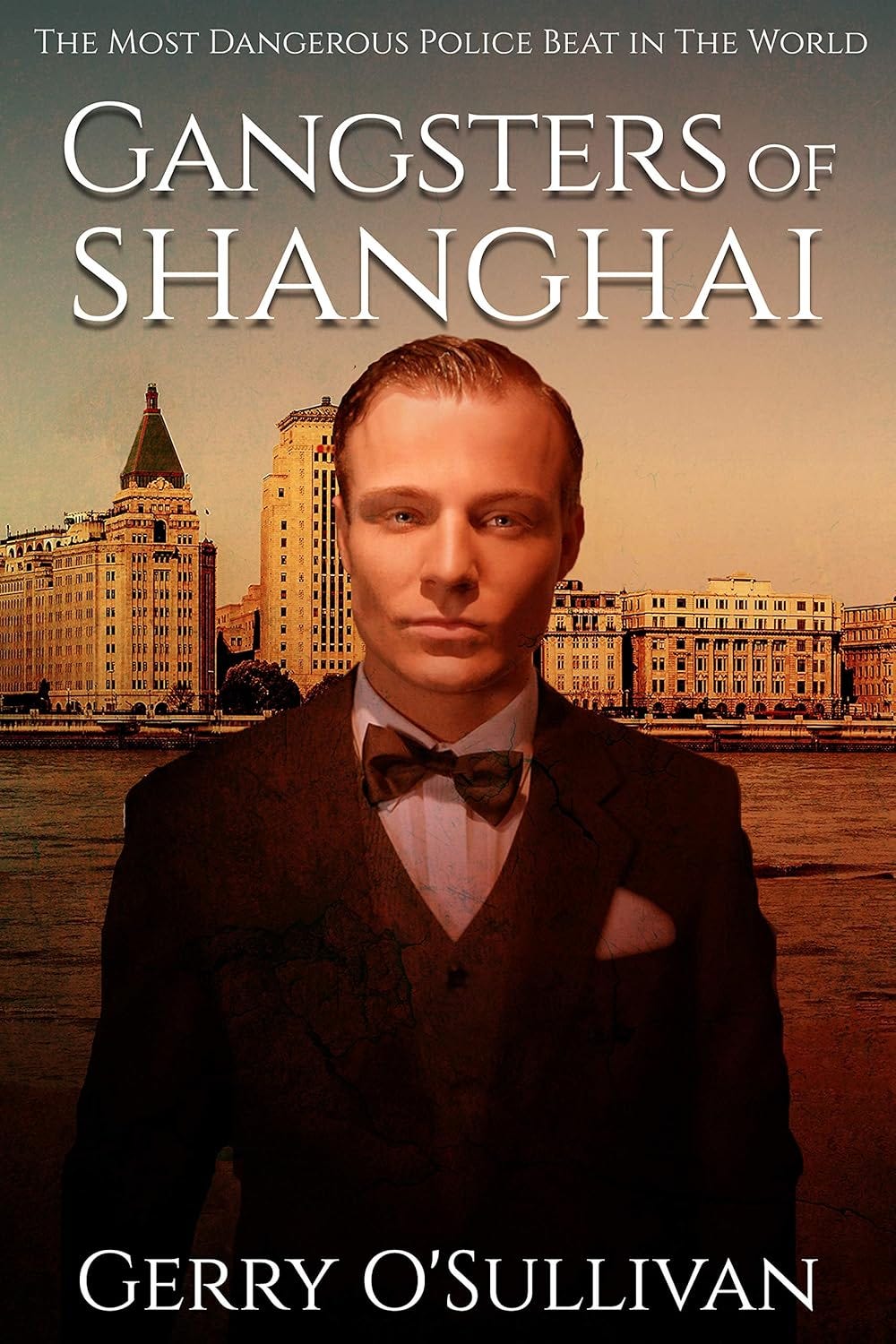


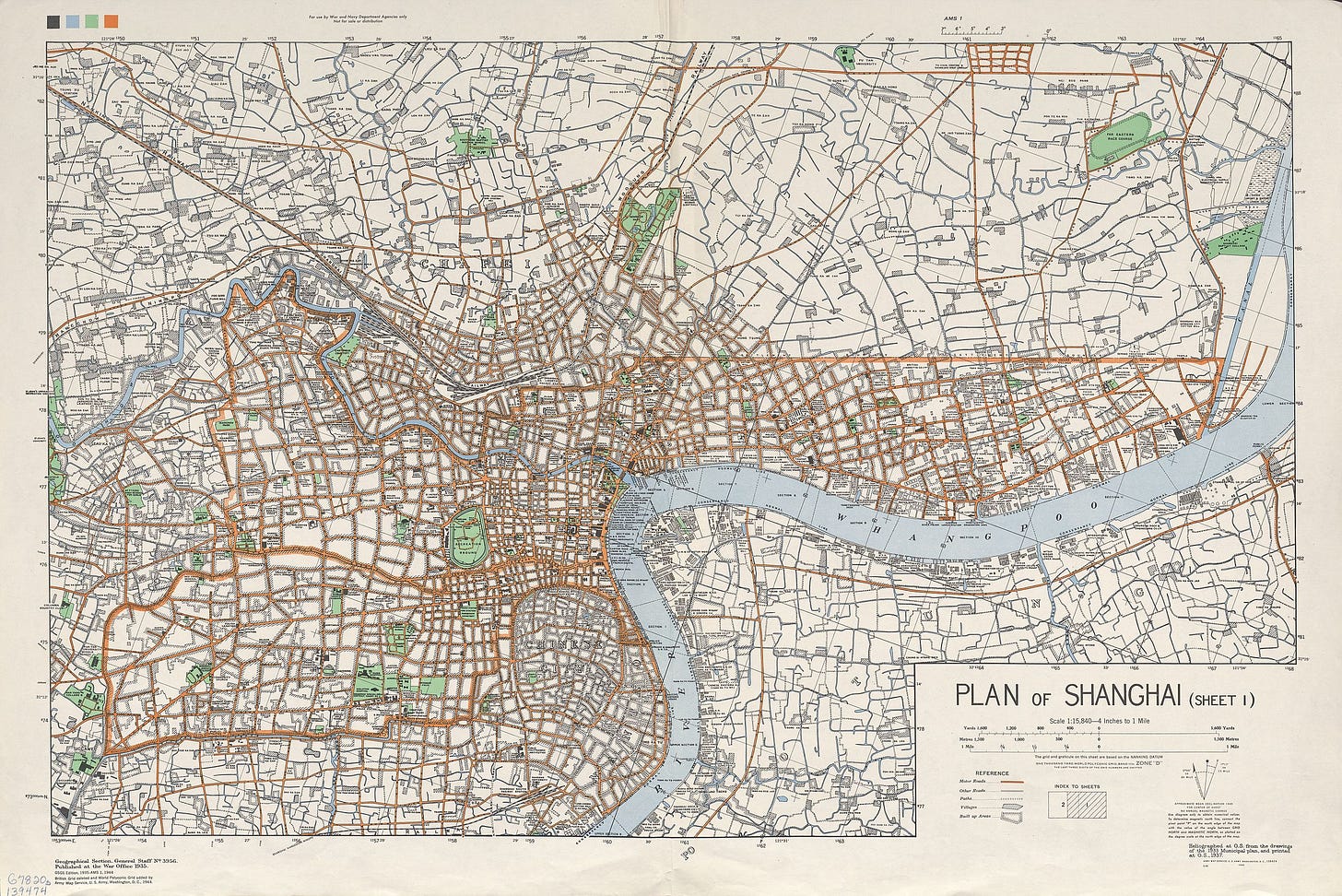
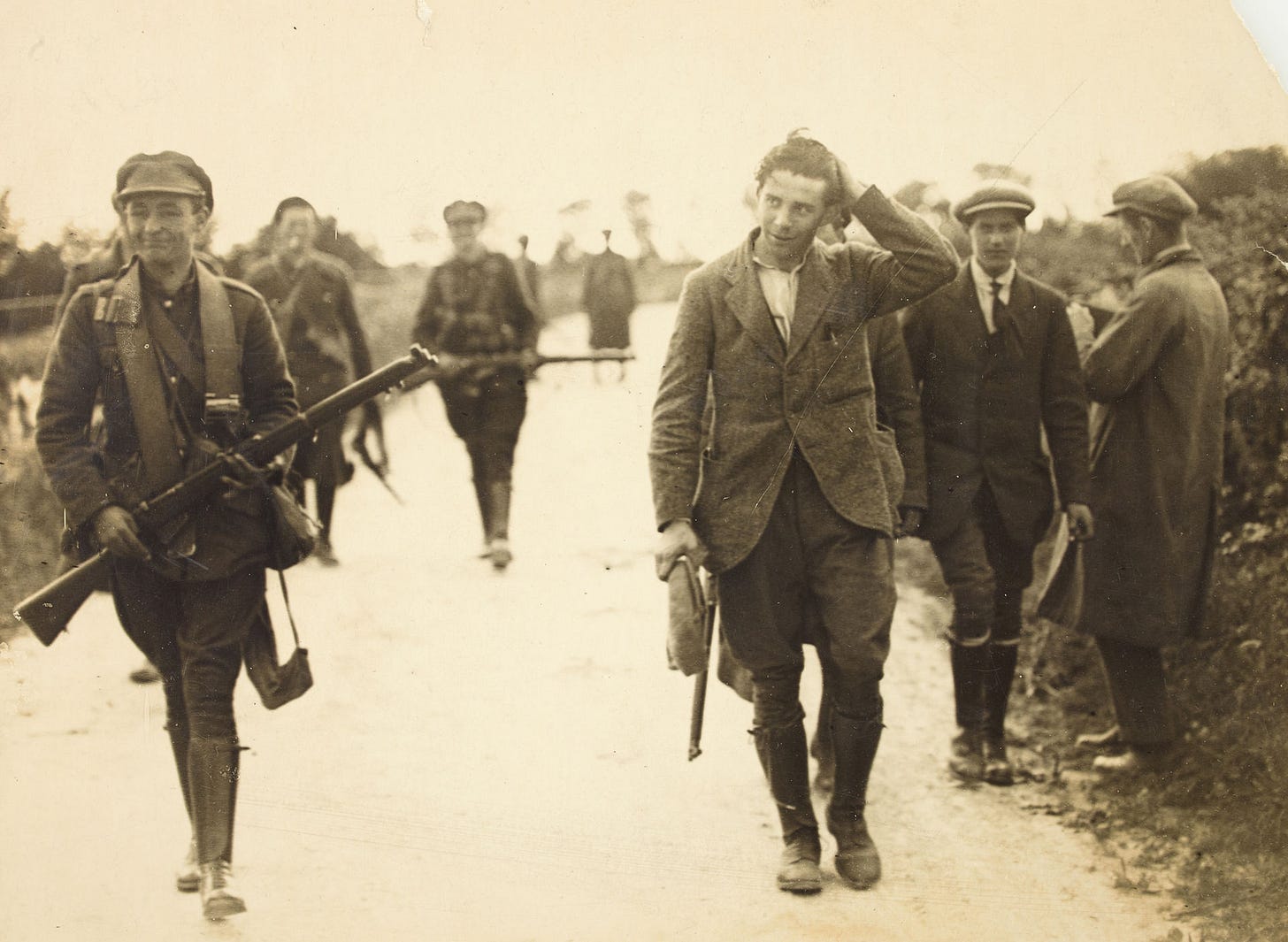
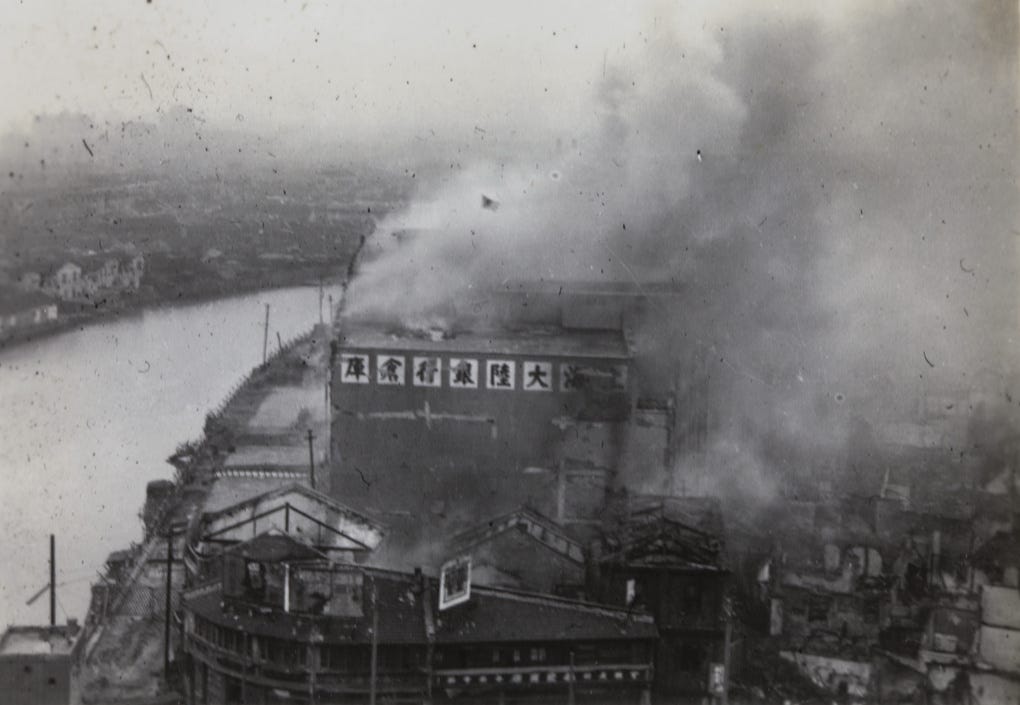
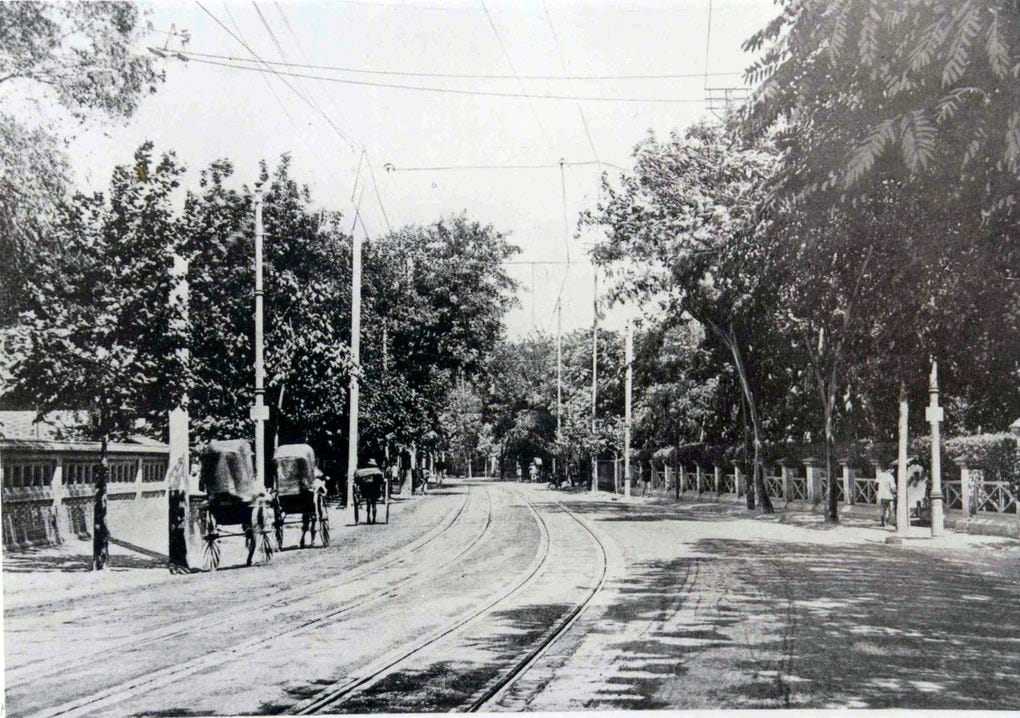
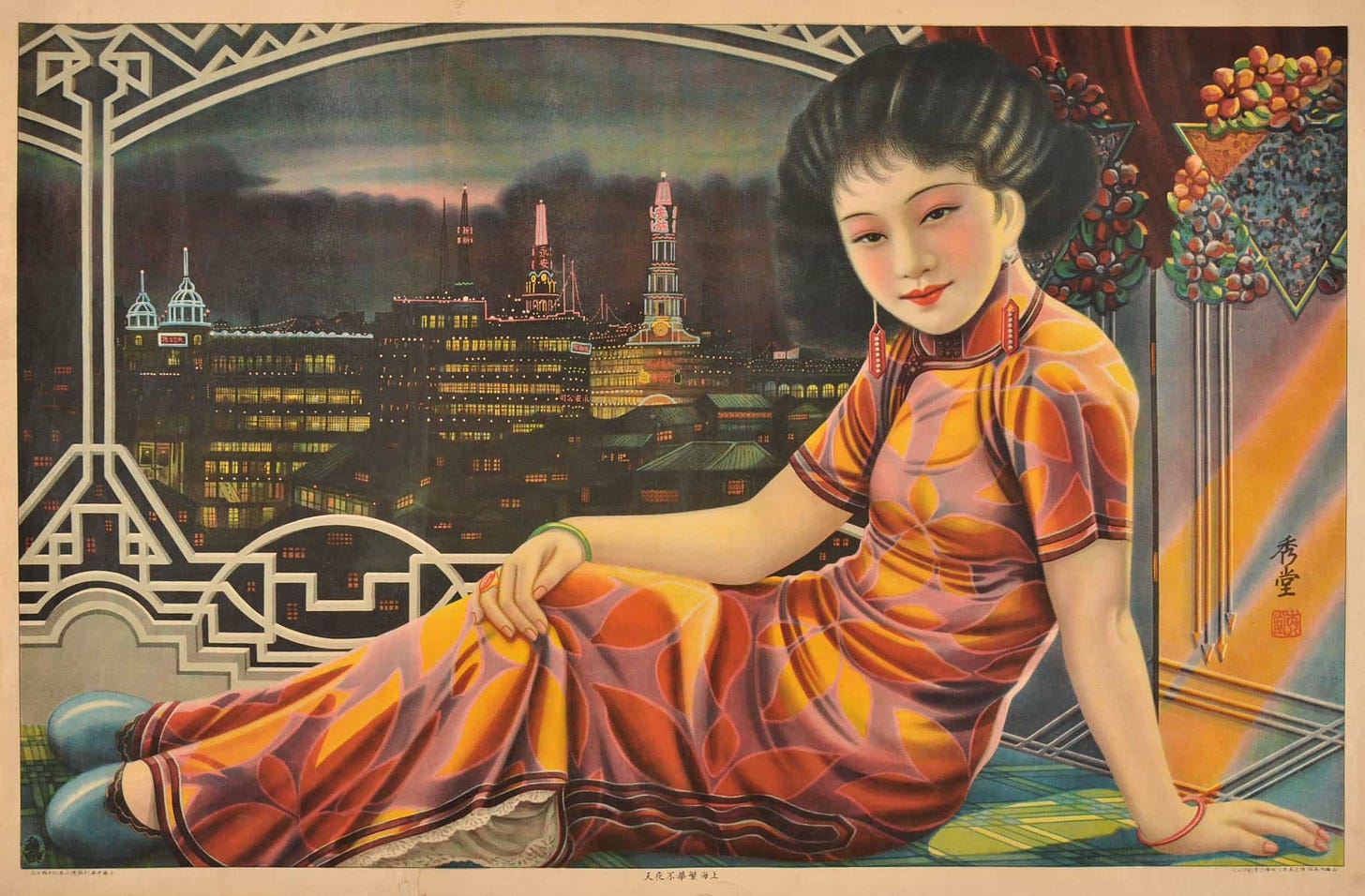
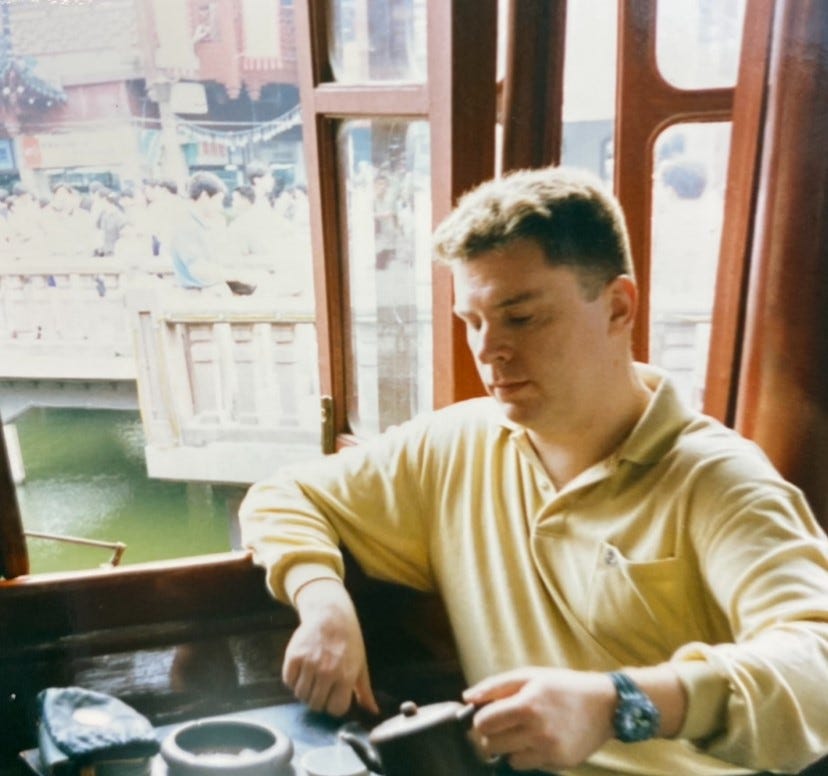
Great article. Gangsters of Shanghai is a fantastic book. Just love it!